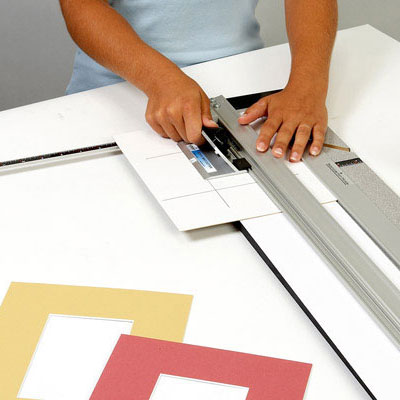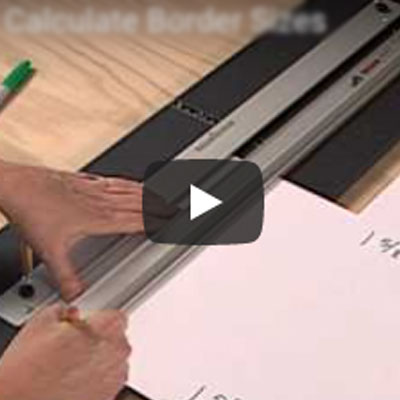What is your purpose in picture framing? If you want to frame properly, you must answer this question first. Traditional custom framing as performed by storefront frame shops might have a purpose quite apart from what you want to accomplish, so you should not simply accept their purpose by default.
Most commercial frame shops seek to make money and to maintain the value and presentability of art for the long term. Seems like a reasonable pair of objectives, right? But reflect for a moment on the dissimilar objectives of an OEM framer.
OEM (original equipment manufacturing) framers are those who perform large volume frame jobs for retailers like Target and Bed, Bath & Beyond. When you purchase framed art at Target you want it cheap and you don't really expect the artwork to have much long term value (after all they are mostly poster prints). So OEM framers have different objectives. They need to keep costs low and maintain presentability but have no compelling reason to safeguard the long term value of the art.
What is Conservation Framing?
Most storefront frame shops practice conservation and archival framing to the exclusion of any other kind. Conservation and archival framing maintains the presentability of the art over the long term and may (or may not) maintain its long term value. Not coincidentally, conservation and archival framing is more expensive than regular framing and is more profitable to the frame shop, satisfying both of the frame shop's primary objectives.
Note that I said that conservation framing may or may not maintain the artwork's long term value. It's important to make the distinction between preservation and presentation. Just because something is presentable doesn't mean its valued is being retained. Museums understand that for art to retain its full value it must be retrievable in its original condition. If the artwork is altered, the value is threatened.
Few things will alter artwork more dramatically than coating it with adhesive, and yet this is commonly done in frame shops when they coat the back of the artwork with adhesive before mounting it. What's more, it is still referred to as conservation framing! Why?
Because conservation framing is really just the promise that nothing potentially acidic will contact the artwork. If the adhesive used in coating the artwork is acid free, it can still be called conservation framing. The long term value of the artwork may be severely compromised but because the adhesive is acid free the presentability will be maintained. This is conservation framing as performed by most storefront frame shops.
Should You Practice Conservation Framing?
It should be pointed out that most storefront frame shops will not coat artwork with adhesive if they determine the artwork has potential long term value. They reserve that treatment for items like posters or digital prints where demand can easily be met with supply because duplicates can be readily made. Limited edition prints and original art are handled differently, by using proper mounting tapes or by trapping the artwork against the backing with mounting corners or mounting strips.
Yet it's important to realize that even traditional storefront frame shops do not guarantee the long term value of all the artwork they frame, and OEM framers for the most part take very few precautions to insure the long term value of framed items, so should you? Well, that depends on your purpose.
Many home-based framers focus on the low end of the picture framing market, all those thousands of items whose value would be less than the cost of framing them in a traditional storefront frame shop. This is potentially an enormous market, one much larger than the market for high end, expensive art that is sought after by most storefront frame shops. But to tap into this market they must keep their prices low. If they are trying to insure the long term value of everything they frame, they will quickly price themselves out of the market.
Does Not Practicing Conservation Framing Mean You Will be Framing Poorly?
Yet steering clear of the more costly conservation and archival framing methods wherever possible doesn't mean they will be doing a poor job of framing, nor does it mean that their framed art will not be properly presentable for their customers. Remember that conservation framing as performed by most storefront frame shops is just the promise that nothing potentially acidic will contact the artwork. But acidity is a relative thing. Some things are more acidic than others.
Acid is a byproduct of the breakdown of lignin. Lignin, it should be understood, is the binding polymer that holds wood together. Therefore, anything made of wood has lignin in it and is potentially acidic. Regular mat board made of wood pulp (the most common kind) has lignin in it. Foam board (the most common kind of mounting board in picture framing) is potentially acidic. The frame itself is usually made of wood and is potentially acidic.
It appears that the artwork is under threat from every quarter. Look, if you want to see the damage caused by acid just dig around in your attic and find something that was framed more than thirty years ago. That brown hazy stain on the artwork under the mat is acid burn caused by the migration of acid out of the lignin bearing material and into the artwork. This is what conservation framing is safeguarding against.
How Picture Framing has Changed
But before we overreact and start driving up the cost of framing by insisting on more expensive conservation grade materials and techniques, let's realize that the materials used in framing have changed in the past 30 years. Back then, proper mounting tapes didn't yet exist. Many framers used household tapes like masking tape, which is highly acidic. Today, even the most rudimentary framers use tapes designed for the purpose of mounting artwork which are almost categorically acid and lignin free.
Back then, foam board didn't yet exist. Corrugated cardboard was the backing of choice for many framed pieces and corrugated cardboard is highly acidic. Today's framers use foam board instead which, while it is potentially acidic, is nowhere near as acidic as corrugated cardboard.
30 years ago mat board was not necessarily treated, which meant that as the lignin broke down it became acidic in a little as 10 or 15 years, threatening the artwork. Today, all potentially acidic mat board is treated. It's put through a bath of calcium carbonate which adds alkalines and creates a buffer against acid migration. Time studies have suggested that mat board treated in this way can safeguard artwork from acid burn for up to 100 years.
And the frame is not an issue because the frame doesn't come into contact with the artwork in most frame jobs.
The Protection You Get from Regular Picture Framing
Bottom line: regular framing, using regular materials like regular mat board, foam board and mounting tapes, provides a decent level of protection for framed art. So why do storefront frame shops decline to use regular materials, insisting instead on more pricey materials like Rag mat board, acid-free foam board, UV protective glass and acid free adhesives, even when the methods they employ do not attempt to retain the long term value of the artwork?
That's easy. Storefront frame shops need to have enough money left over after they pay their overhead costs to generate profit. Conservation and archival framing helps them to achieve that goal while at the same time insuring long term presentability – longer than 100 years – for the high end, expensive artwork that is their most common stock in trade.
It makes perfect sense, given their objectives, for storefront frame shops to practice conservation and archival framing. On the other hand, given the purposes of many home-based framers, who are trying to appeal to customers on the basis of price and who don't have the hefty cost of overhead staring them in the face, inflating the cost of picture framing by resorting to more costly materials when they are not strictly necessary is counterproductive.
For poster prints, digital photography or any other easily reproducible artwork, regular materials will be adequate and will keep costs low. Whenever a customer insists on a low price, even when the artwork is of high potential value, he or she should be quoted the job both ways – with regular materials and with conservation grade materials – and provided an explanation of the different levels of protection before being offered the choice.
The first objective of home-based framers should always be to keep the price low. Customers willing to spend more for picture framing will usually opt for an established storefront frame shop rather than a home-based picture framer. In most cases, price is the single most compelling reason why customers choose home-based framers. So, as a home-based framer, your purpose is to provide your customers what they want.
And once you know your purpose, it becomes a lot easier to make the right choices when it comes to conservation and archival framing.












